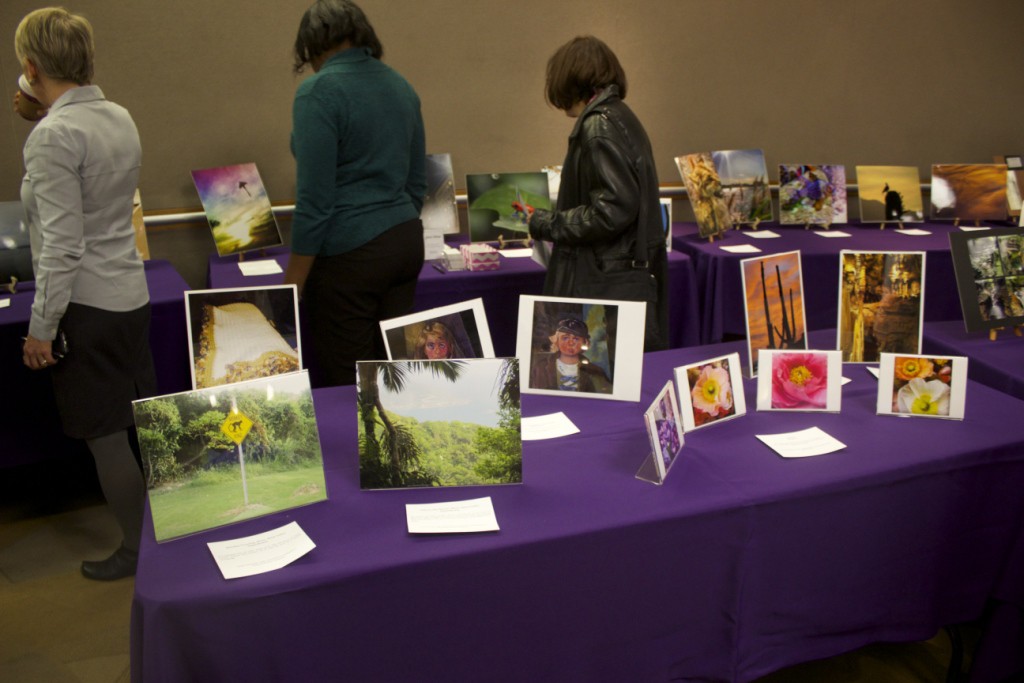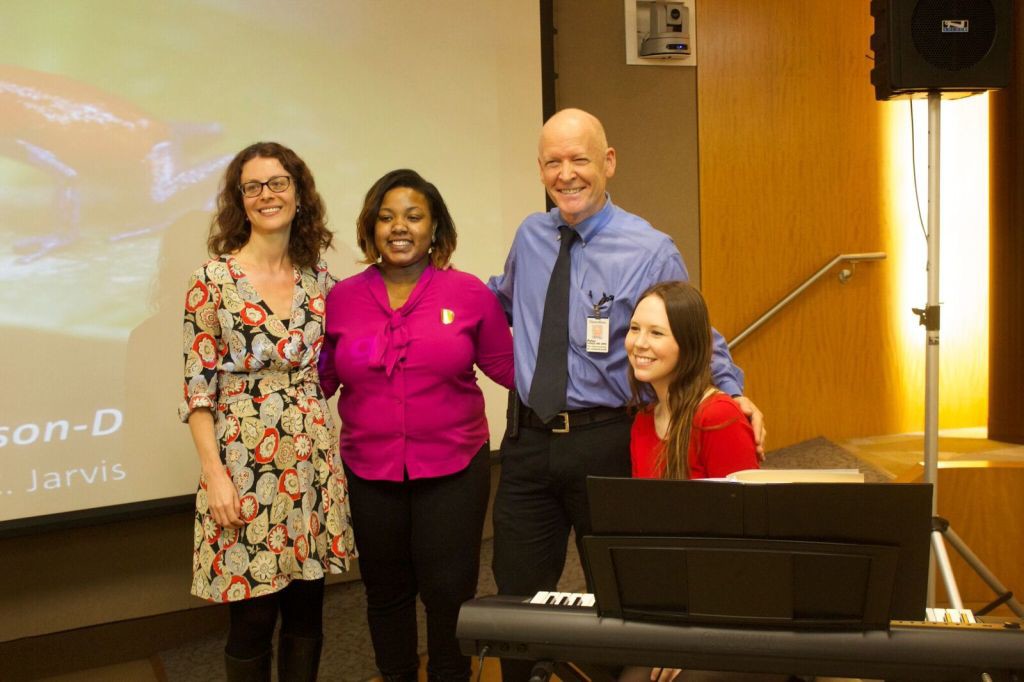
Photo courtesy Montefiore Health System
Vital Stats
1: Number of hours an art therapy session took to reduce symptoms in cancer inpatients. (Source: Journal of Pain & Symptom Management, 2006)
Within the grand hall of Montefiore Medical Center in Norwood, hospital medical staff and associates took a break from their daily tasks to stop by an art gallery showcasing the other side of their colleagues’ hidden talents.
The Associate Art Showcase was hosted by Montefiore’s Healing Arts Program, which served as a kind of collective meeting ground for hospital staffers looking to show off their artistic side.
“The feel in the room was really special and everyone was really enjoying themselves and connecting with each other,” said Ronit Fallek, Director of Montefiore’s Healing Arts Program.

Lining the tables in the room were photographs, drawings and paintings. At one table, Shirley Roy, pharmacy specialist for the Oncology Pharmacy at Einstein Campus presented a photograph of a lioness protecting her cubs while Suzanna Harmouche, post-graduate resident at the Department of Psychiatry, crafted a painting of a ballerina seeing her own reflection. Bellinger Moye, a customer service liaison for Montefiore’s Care Management staff in Tarrytown, went the pop culture route with a kaleidoscopic portrait of slain rap singer, Notorious B.I.G. Some of the pieces were created for the show, according to Fallek.
Attendees also were treated to an energizing performance by the Associate Choir, a moving song sung by Adam Summers (music therapist, Child Life Program) and with Kristen Corey (music therapist and program coordinator, Healing Arts Program) on piano, and readings of original poetry.
The art display represented several initiatives by the Montefiore Health System’s Healing Arts Program, which offers art programming that’s pleasing to patients’ senses. The department collaborates with various departments, including the Division of Nursing, implementing various art-therapies to assist patients in duress. Studies have proven a link between improved health outcomes and creative art approaches.
“For patients we have bedside music, we have bedside art therapy, and also have what’s called environmental music therapy,” said Fallek. “The difference there is that rather than playing individually at the bedside, the music therapist plays on an open clinical unit where patients are all in the same space together so that everybody can hear the music together.”
Under the department, volunteer musicians play soothing tones at waiting rooms, while creative art services for patients include coloring sessions.
Studies have indicated major benefits to creative expression, which aid in a person’s psychological well-being, particularly among the older population. “The creative capacity actually uses other parts of your brain. It’s actually building capacity on a neurological level,” Fallek said.




